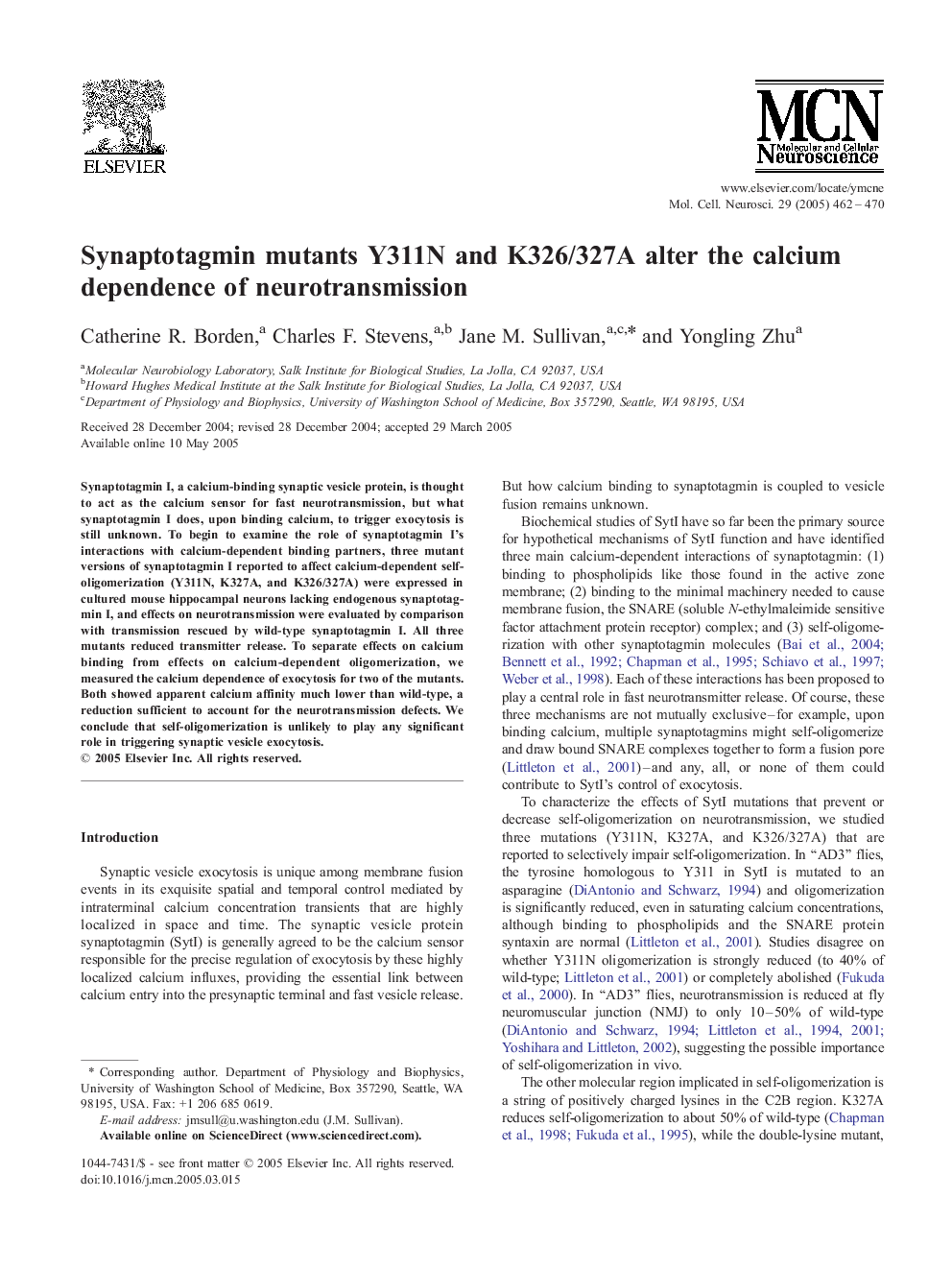| Article ID | Journal | Published Year | Pages | File Type |
|---|---|---|---|---|
| 10956895 | Molecular and Cellular Neuroscience | 2005 | 9 Pages |
Abstract
Synaptotagmin I, a calcium-binding synaptic vesicle protein, is thought to act as the calcium sensor for fast neurotransmission, but what synaptotagmin I does, upon binding calcium, to trigger exocytosis is still unknown. To begin to examine the role of synaptotagmin I's interactions with calcium-dependent binding partners, three mutant versions of synaptotagmin I reported to affect calcium-dependent self-oligomerization (Y311N, K327A, and K326/327A) were expressed in cultured mouse hippocampal neurons lacking endogenous synaptotagmin I, and effects on neurotransmission were evaluated by comparison with transmission rescued by wild-type synaptotagmin I. All three mutants reduced transmitter release. To separate effects on calcium binding from effects on calcium-dependent oligomerization, we measured the calcium dependence of exocytosis for two of the mutants. Both showed apparent calcium affinity much lower than wild-type, a reduction sufficient to account for the neurotransmission defects. We conclude that self-oligomerization is unlikely to play any significant role in triggering synaptic vesicle exocytosis.
Related Topics
Life Sciences
Biochemistry, Genetics and Molecular Biology
Cell Biology
Authors
Catherine R. Borden, Charles F. Stevens, Jane M. Sullivan, Yongling Zhu,
